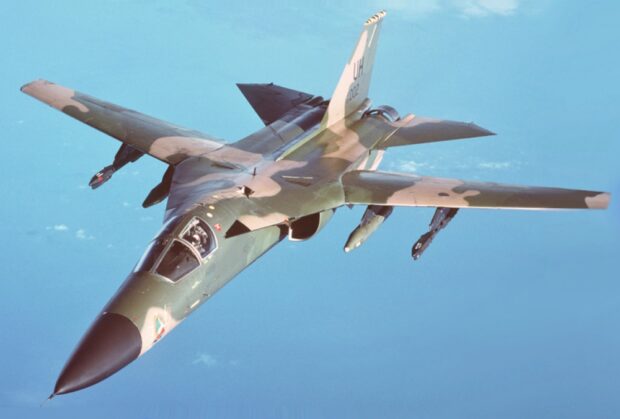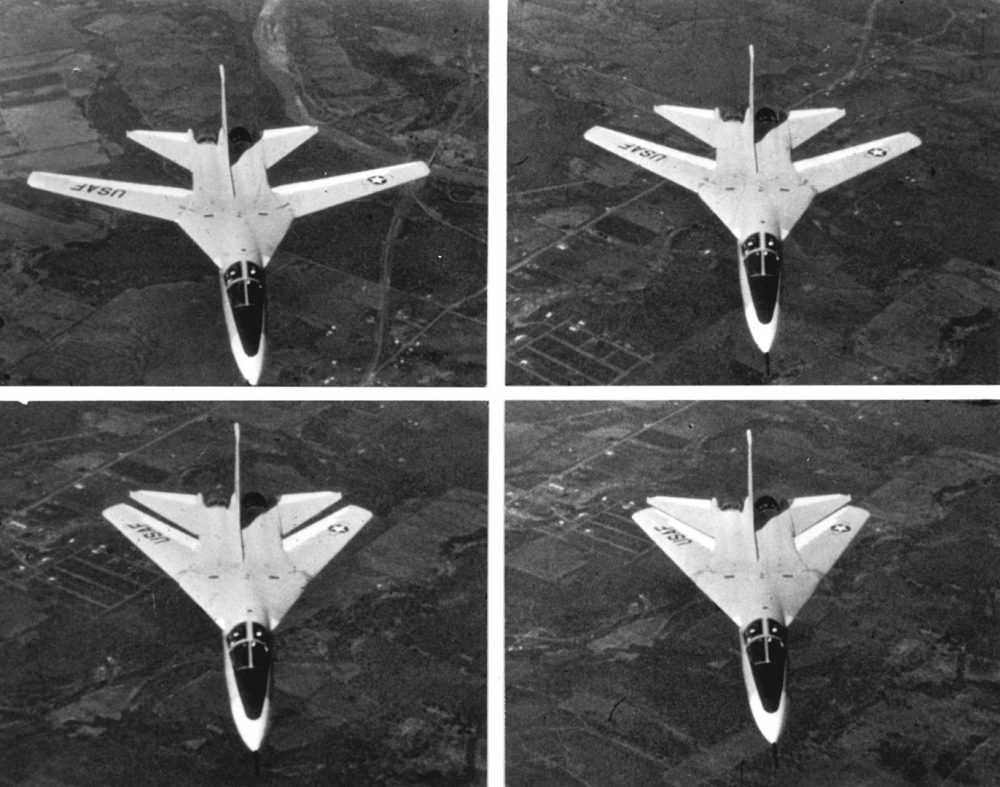The General Dynamics F-111 Aardvark is a retired supersonic, medium-range, multirole combat aircraft. Production models of the F-111 had roles that included attack (e.g. interdiction), strategic bombing (including nuclear weapons capabilities), reconnaissance and electronic warfare.
The name Aardvark was derived from perceived similarities of the aircraft to the animal: a long nose and low-level, terrain-following capabilities. The word “aardvark” originated in the Afrikaans language, as a contraction of “earth-pig”, and this was the source of the F-111’s nickname of “Pig”, during its Australian service.
Developed in the 1960s by General Dynamics under Robert McNamara’s TFX Program, the F-111 pioneered variable-sweep wings, afterburning turbofan engines, and automated terrain-following radar for low-level, high-speed flight. Its design influenced later variable-sweep wing aircraft, and some of its advanced features have become commonplace. The F-111 suffered problems during initial development, largely related to the engines. A fighter variant intended for the United States Navy, the F-111B, was canceled before production; it was intended for aircraft carrier-based roles, including long-range interception. Several specialized models, such as the FB-111A strategic bomber and the EF-111s electronic warfare aircraft, were also developed later on.
The F-111 entered service in 1967 with the United States Air Force (USAF). The Royal Australian Air Force (RAAF) also ordered the F-111 and began operating the F-111C in 1973. As early as March 1968, the USAF were deploying F-111s into active combat situations; the type saw heavy use during the latter half of the Vietnam War to conduct low-level ground-attack missions, flying in excess of 4,000 combat missions while incurring only six combat losses in the theatre. The F-111s also participated in the Gulf War (Operation Desert Storm) in 1991; the F-111Fs completed 3.2 successful strike missions for every unsuccessful one, better than any other U.S. strike aircraft used in the operation. RAAF F-111s never saw offensive action, but were deployed periodically as a deterrent, such as for the Australian-led International Force for East Timor.
Being relatively expensive to maintain amid post-Cold War budget cuts, the USAF elected to retire its F-111 fleet during the 1990s; the last F-111Fs were withdrawn in 1996 while the remaining EF-111s also departed in 1998. The F-111 was replaced in USAF service by the F-15E Strike Eagle for medium-range precision strike missions, while the supersonic bomber role has been assumed by the B-1B Lancer. The RAAF continued to operate the type up until December 2010, when the last F-111C was retired; its role was transitioned to the Boeing F/A-18E/F Super Hornet as an interim measure until the Lockheed Martin F-35 Lightning II became available.
Sources:Wikipedia; YouTube


